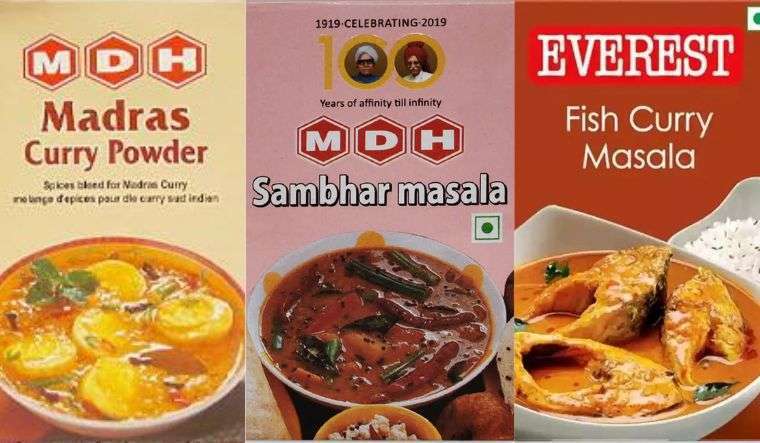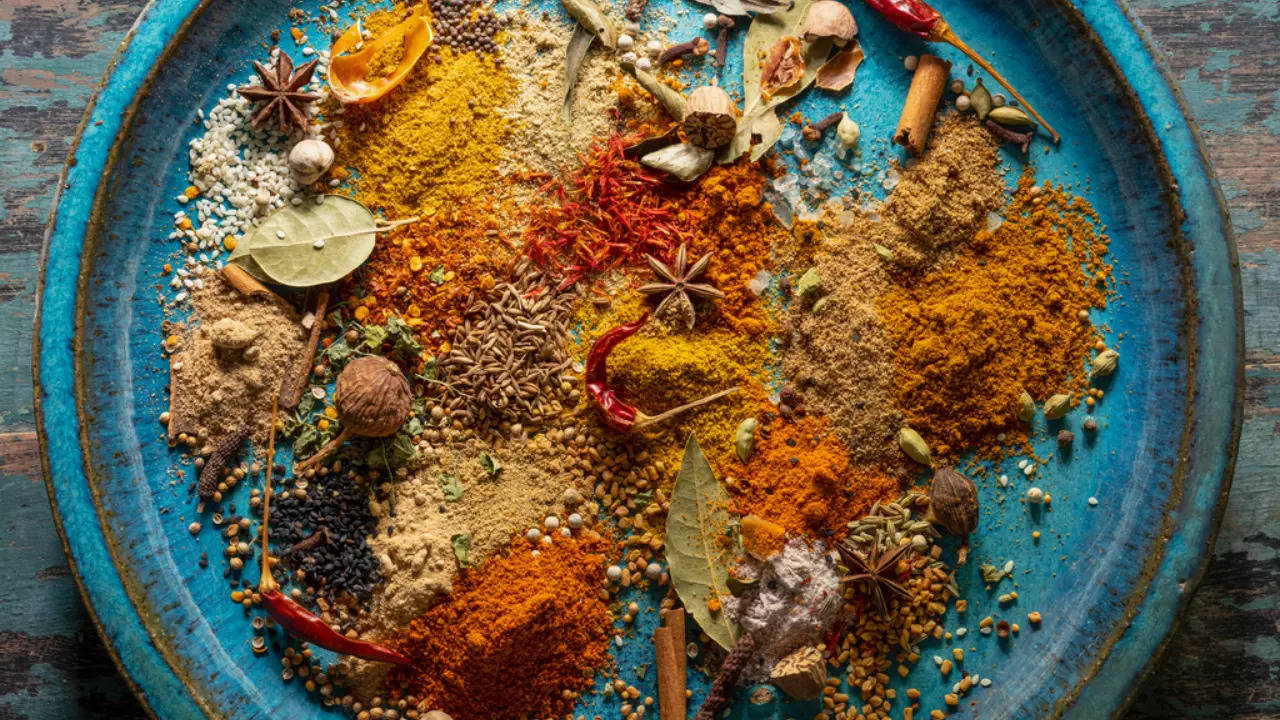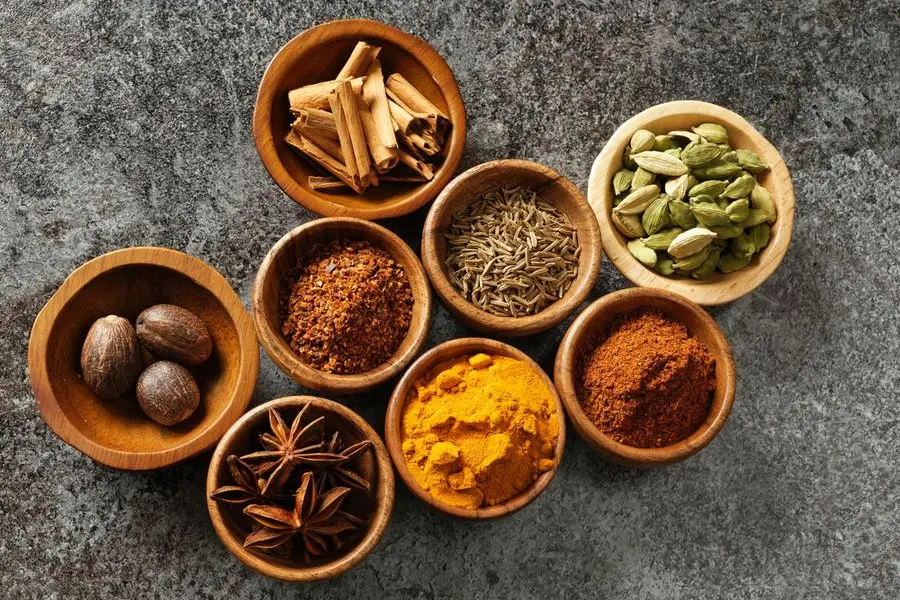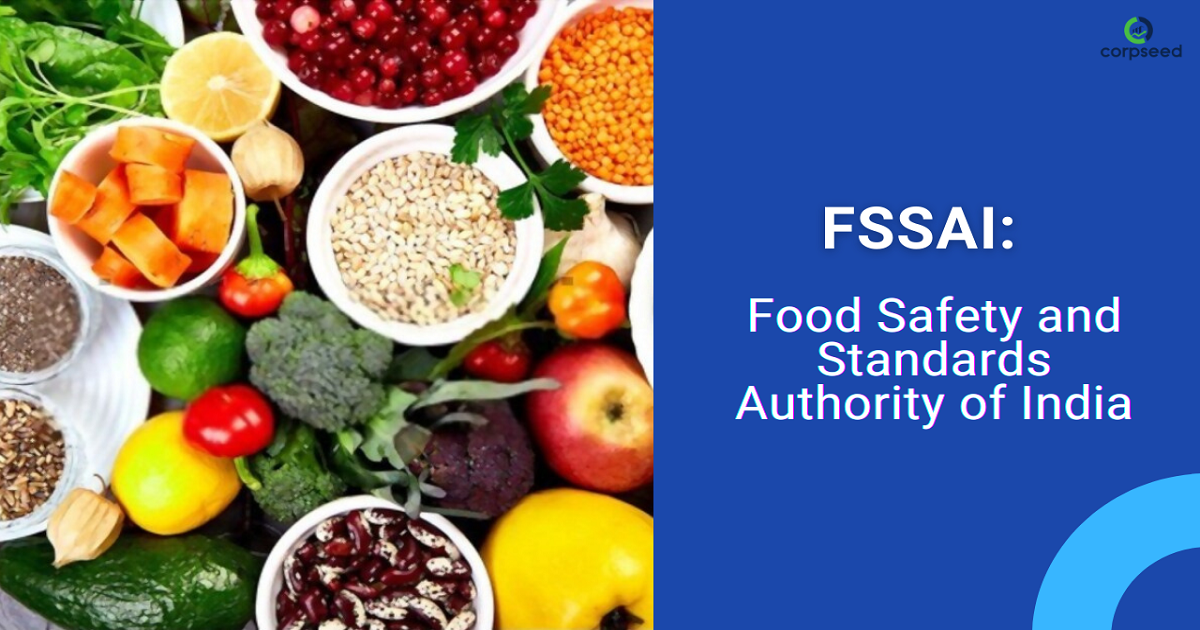Indian Food Without Spices, Is A No Deal; India’s Biggest Spice Brands Under Global Scrutiny, How India’s FSSAI Has Leashed Out A Slow Poison On Citizens Without Missing A Hear Beat; How Many Such Products Are We Consuming Unknowingly?

We are what we eat, and needless to say, Indian food cuisine is incomplete without a dash of those mandatory spices.
Historical references clearly state India as ‘the land of spices’; we have traded these valuable commodities, where traders from ‘faraway lands’ would come to pick up the valuable commodities. Fast-forward to present times, and what do we have—global scrutiny of the very spices that form the ‘core’ of what we eat on a daily basis.
To put things into perspective, the last few days have been buzzing with charges flying plenty; Singapore, Hong Kong, and even the United States have issued a ‘warning’ with accusations of serious ‘contaminations’ found in the top Indian spice brands. These are the very brands that we have been consuming for donkey years, yet it took other countries to find out what we (FSSAI and the brands) have been hiding under the carpet for so long.
Let us recap all that has happened in the last few days and understand how the citizens and consumers of this country have been ‘fooled’ and slowly ‘poisoned’ all in the name of lethargy on the part of our food regulator, FSSAI, and these mega brands in the name of corporate greed.
The two biggest brands – MDH and Everest, had become infamous – however, even before global scrutiny came knocking at our doors – MDH faced many rejections, primarily from the United States.
 The Potent Mix
The Potent Mix
Taking stock of recent events sheds light on how citizens and consumers have been deceived and potentially harmed.
MDH and Everest, two prominent brands, have particularly drawn attention, with MDH facing prior rejections from the United States.
For instance, MDH, a popular Indian spice brand, has faced scrutiny since 2021 due to alleged contamination in some of its products.
Analysis of U.S. regulatory data reveals that an average of 14.5% of MDH’s shipments to the U.S. have been rejected over bacterial presence.
Furthermore, Hong Kong and Singapore, recently suspended sales of certain spice blends from MDH and Everest, citing elevated levels of ethylene oxide, a carcinogenic pesticide that poses significant health risks with prolonged exposure.
In response, the companies have defended the safety of their products, with MDH stating that it does not employ ethylene oxide at any stage of spice storage, processing, or packaging.
 The Call To Action
The Call To Action
Nevertheless, authorities in the United States, Australia, and India (a little late in the day) are actively investigating these allegations, and despite their popularity in India and global exportation, the integrity of these brands has been called into question, raising concerns about food safety and regulatory oversight.
Australia is considering potential actions and hasn’t dismissed the possibility of a recall.
Meanwhile, the Maldives, amidst diplomatic tensions with India, has taken a more drastic measure by prohibiting the sale of Everest and MDH products.
India holds the title of the world’s largest spice producer, consumer, and exporter. According to Zion Market Research, the domestic spice market in India was valued at $10.44 billion in 2022, while the Spices Board reported exports worth $4 billion during 2022-23.
The Constant Trend
Even before the recent scrutiny, MDH, a century-old family-run Indian company, faced rejection of its products in the United States due to the presence of salmonella, a bacteria known to cause gastrointestinal illness.
Between October 2023 and May 3 of the current fiscal year, 20% or 13 out of MDH’s 65 shipments to the United States were rejected due to salmonella contamination, as per Reuters’ compiled data from the U.S. Food and Drug Administration (FDA).
Although the FDA didn’t specify the quantity in each shipment, the rejected shipments included mixed spices, seasonings, and fenugreek.
The rejection rate stood at about 15% for MDH shipments in fiscal 2022-23 and 8.19% in 2021-22, primarily due to salmonella contamination.
Everest experienced fewer rejections in the United States, with only one out of 450 shipments in the ongoing 2023-24 year rejected so far due to salmonella.
In 2022-23, approximately 3.7% of Everest’s U.S. shipments faced halts, while there were no rejections in the 189 shipments to the U.S. in the previous year.
In response to inquiries about the FDA data, a spokesperson for MDH asserted the safety of its products. Everest claimed an ‘exceptional’ rejection rate of less than 1% for its U.S. shipments in fiscal 2023-2024, emphasizing the safety of their products.
MDH and Everest have long been prominent spice manufacturers in India, supplying products widely used in households and restaurants to enhance the flavour of various dishes.
However, instances of salmonella contamination led to recalls of MDH’s spice mix batches in the U.S. in 2019, and Everest faced similar findings prompting FDA recalls and public health alerts in 2023.
 So, how did this entire fiasco and corporate greed come to light?
So, how did this entire fiasco and corporate greed come to light?
It all began innocuously with a routine food surveillance exercise conducted in Tsim Sha Tsui, a bustling shopping district renowned for its hotels and restaurants overlooking Victoria Harbour in Hong Kong.
During this operation, the Centre for Food Safety, a governmental body, gathered samples of spices from various retail establishments.
To everyone’s surprise, the test results uncovered the presence of a pesticide known as ethylene oxide in four products belonging to two popular Indian spice brands: MDH’s Madras Curry Powder, Sambhar Masala, and Curry Powder, along with Everest’s Fish Curry Masala.
This revelation sent shockwaves throughout the region, prompting countries worldwide to question the safety of their curry supplies.
Swiftly, authorities in Hong Kong instructed vendors to withdraw these items from shelves and cease their sale. Within a short span, the Singapore Food Agency mandated a local importer, S.P. Muthiah & Sons Pte Ltd, to recall Everest’s Fish Curry Masala from the city-state, even advising individuals who had consumed it and harboured health concerns to “seek medical advice.”
 Can we regain our lost glory and what is at stake?
Can we regain our lost glory and what is at stake?
Well, according to experts, timely intervention by Indian regulators and the overhaul of the domestic spice market are crucial steps toward rebuilding trust internationally—a prerequisite for India’s spice industry to realize its ambitious export target of $10 billion by 2030.
India holds the dual distinction of being the largest consumer and exporter of spices globally. Often referred to as the “spice bowl of the world,” India cultivates over 75 varieties of spices.
Notably, spice exports from the country in FY23-24 were valued at $4.25 billion. Key spices exported from India include chilli powder, cumin, turmeric, curry powder and paste, cardamom, pepper, coriander, and nutmeg.
Former Indian ambassador to the World Trade Organization (WTO), Jayant Dasgupta, emphasizes the necessity for India to refurbish its credibility in the global market by enhancing its domestic production system through regular inspections and tests.
He asserts that an improvement in the quality of the domestic spice market will inevitably elevate the standard of India’s export quality.
Dasgupta also suggests that major spice exporters likely procure ingredients from smaller producers catering to domestic markets.
A report released by Delhi-based think tank, Global Trade Research Initiative (GTRI), estimates that the recent dispute could impact spice exports worth $700 million.
The report shows the need for a fundamental shift in India’s approach to food safety, advocating for transparency, stringent enforcement, and clear communication to uphold the integrity of both exports and domestic products.
According to Dasgupta, the European Union, renowned for its stringent standards, is likely monitoring the dispute closely and may respond soon.
He highlights that if the E.U. identifies any irregularity in an agricultural product, it typically opts to destroy the affected consignment rather than returning it, invoking specific provisions of the WTO.
 What lies ahead in this controversy largely hinges on the reaction of other significant importers.
What lies ahead in this controversy largely hinges on the reaction of other significant importers.
China, as India’s primary spice destination with imports totaling $928 million in FY24, has not yet issued a statement.
Australia is contemplating the possibility of recalling certain spice products from India; a spokeswoman from Food Standards Australia New Zealand (FSANZ) acknowledges awareness of the potential contamination of spice products from India and the actions taken in Hong Kong and Singapore.
She indicates collaborative efforts with federal, state, and territory food enforcement agencies to determine if further action, such as a food recall, is warranted in Australia. Additionally, she emphasizes that ethylene oxide is not permitted for use as a treatment for foods sold in Australia.
The Sordid Tale Of Everest Spices
Everest, a prominent producer generating over 10 million spice packets daily and exporting to more than 60 countries, clarifies that certain nations require treatment using ethylene oxide.
This substance, described as “a gas and not an ingredient,” is primarily utilized to control microorganisms and pathogens in food products, thereby extending their shelf life.
Some countries like the U.S. and Canada prefer ethylene oxide sterilization for food safety over other methods, aiming to prevent adverse effects on products.
However, the acceptance of ethylene oxide varies across different regions.
While the U.S. permits its use within certain limits, it is prohibited in spices for domestic consumption in India. In Singapore, as outlined in a statement by the Singapore Food Agency on April 18, ethylene oxide “is not authorized for use in food” but “can be used to fumigate agricultural products to prevent microbial contamination.”
 Finally Waking Up
Finally Waking Up
Recently, on May 7, the Spices Board, a regulatory authority promoting Indian spice exports, issued a nine-page circular advising exporters to recognize ethylene oxide as a hazard.
It instructed them to ensure the absence of ethylene oxide and its metabolites throughout the supply chain by testing raw materials, processing aids, packaging materials, and finished goods.
The agency, under the Union ministry of commerce and industry, also mandated firms to conduct a root cause analysis if ethylene oxide contamination was detected, aiming to prevent future occurrences.
Last but not least, the Food Safety and Standards Authority of India (FSSAI), tasked with ensuring the quality of food consumed in the country, has refuted claims of permitting high levels of pesticide residues in spices and herbs, stating that it has been actively collecting samples of branded spices.
However, the widespread production of illicit and substandard spices remains a significant concern in India.
Just last week, the Delhi Police seized 15 tonnes of counterfeit spice powder from factories in Karawal Nagar. During the crackdown on the masala racket, authorities also discovered rotten rice, spoiled pearl millets, and wood dust used in the adulteration of spice powder.
These incidents have raised alarms for India’s spice trade, which has seen exports grow steadily from $408 million in FY2002 to $4.2 billion presently. At the 14th World Spice Congress in Navi Mumbai last September, officials projected India’s spice exports to reach $10 billion by 2030.
 FSSAI Under The Scanner
FSSAI Under The Scanner
Addressing reports alleging that it permits significantly higher pesticide residue levels in herbs and spices, the Food Safety and Standards Authority of India (FSSAI) denounced such claims as false and malicious.
The regulatory body emphasized that it upholds stringent standards for Maximum Residue Levels (MRL) of pesticides.
FSSAI clarified that MRLs for pesticides are established based on individual risk assessments for various food commodities. Its Scientific Panel on Pesticide Residues meticulously evaluates data provided by the Central Insecticides Board & Registration Committee (CIB & R.C.) to determine appropriate MRLs, including those for spices.
India has registered over 295 pesticides, with 139 approved for use in spices alone, according to the regulator. These pesticides are subject to varying MRLs based on specific crop requirements and risk assessment data.
However, FSSAI faced criticism following an April 8 order that relaxed pesticide norms for herbs and spices by increasing the maximum residue limit (MRL) for a pesticide. The new limit raised concerns among activists, who feared it would jeopardize the export quality of Indian spices to key markets.
The revised MRL for a pesticide in herbs and spices was increased from 0.01mg/kg to 0.1mg/kg, as reported by E.T. FSSAI clarified that this adjustment applies solely to pesticides not registered in India by CIB & R.C.
The decision was recommended by the Scientific Panel on Pesticide Residues, taking into account the adoption of MRLs ranging from 0.1mg/kg and above by the Codex Alimentarius Commission on Pesticide Residues for spices worldwide during 2021-23.
Furthermore, FSSAI’s order also raised the MRL for pesticides not registered in India, indicating they are prohibited for use within the country but could be present in imported products.
 The Last Bit, The recent revelations regarding pesticide residues in Indian spices yet again indicate a concerning trend of regulatory laxity and corporate negligence, resulting in a potential threat to public health.
The Last Bit, The recent revelations regarding pesticide residues in Indian spices yet again indicate a concerning trend of regulatory laxity and corporate negligence, resulting in a potential threat to public health.
The fact that these issues were only brought to light by foreign entities raises serious questions about the effectiveness of domestic oversight mechanisms.
The Food Safety and Standards Authority of India (FSSAI), tasked with safeguarding the quality of food consumed in the country, has been called into question for its handling of the matter.
Reports of relaxed pesticide norms and increased maximum residue levels (MRL) in herbs and spices have fueled apprehension about the adequacy of regulatory standards set by FSSAI. Such leniency on the part of regulatory bodies can be viewed as a negligence of duty, as it exposes Indian citizens to potential health risks.
Moreover, the involvement of corporate interests adds another layer of complexness to this issue.
The pursuit of profit margins by spice manufacturers may have compromised safety standards, leading to the widespread production and distribution of contaminated food products.
This corporate greed, coupled with regulatory oversight failures, has created a situation where consumers unwittingly consume adulterated and potentially harmful spices on a daily basis.
The reliance on foreign scrutiny to uncover these issues highlights a systemic failure within India’s food safety infrastructure. It raises concerns about the prevalence of similar lapses in other sectors of the food industry and the potential scale of contamination that may be going unnoticed.




